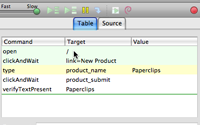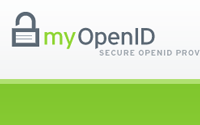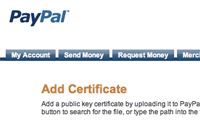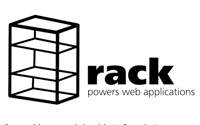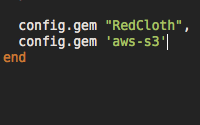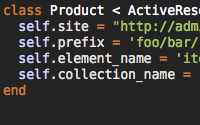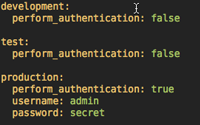Categories
- Active Record
- Active Resource
- Active Support
- Administration
- Ajax
- APIs
- Authentication
- Authorization
- Background Jobs
- Caching
- Code Walkthrough
- Controllers
- Debugging
- Deployment
- eCommerce
- Forms
- Mailing
- Models
- Performance
- Plugins
- Production
- Rack
- Rails 2.0
- Rails 2.1
- Rails 2.2
- Rails 2.3
- Rails 3.0
- Rails 3.1
- Rails 3.2
- Rails 4.0
- Refactoring
- Routing
- Search
- Security
- Testing
- Tools
- Views
Applied Filters:
app x
Selenium
Selenium is a great way to test your app automatically through a browser. See how it works in this episode.
(9 minutes)
OpenID Authentication
Ever wonder how to implement OpenID authentication in your Rails app? This episode will show you how to add it to a site with an existing authentication system.
(11 minutes)
PayPal Security
This episode shows how to encrypt the variables passed to PayPal and verify the authenticity of the payment notifications (IPN).
(11 minutes)
Rack Middleware
Rack middleware is a way to filter a request and response coming into your application. In this episode I show how to modify the response body using middleware.
(12 minutes)
Gem Dependencies
In Rails 2.1 we now have the ability to set gem dependencies. Now it's easier than ever to specify which ruby gems our rails app relies on.
(6 minutes)
Capistrano Tasks
Do you know how to make Capistrano tasks? See how to change default deployment behavior with custom tasks in this episode.
(8 minutes)
Monitoring with God
Need to ensure your background processes stay up and running and don't use too many resources? Check out the god gem as shown in this episode.
(14 minutes)
Debugging with ruby-debug
This episode will show you how to debug a rails app using ruby-debug: set a breakpoint, inspect variables, change the code and more.
(8 minutes)
More on ActiveResource
See how to handle authentication and custom actions using ActiveResource in this episode.
(8 minutes)
YAML Configuration File
Application configuration shouldn't be spread throughout your code base. Instead a much better place to put it is an external YAML file. See how to do that in this episode.
(7 minutes)

